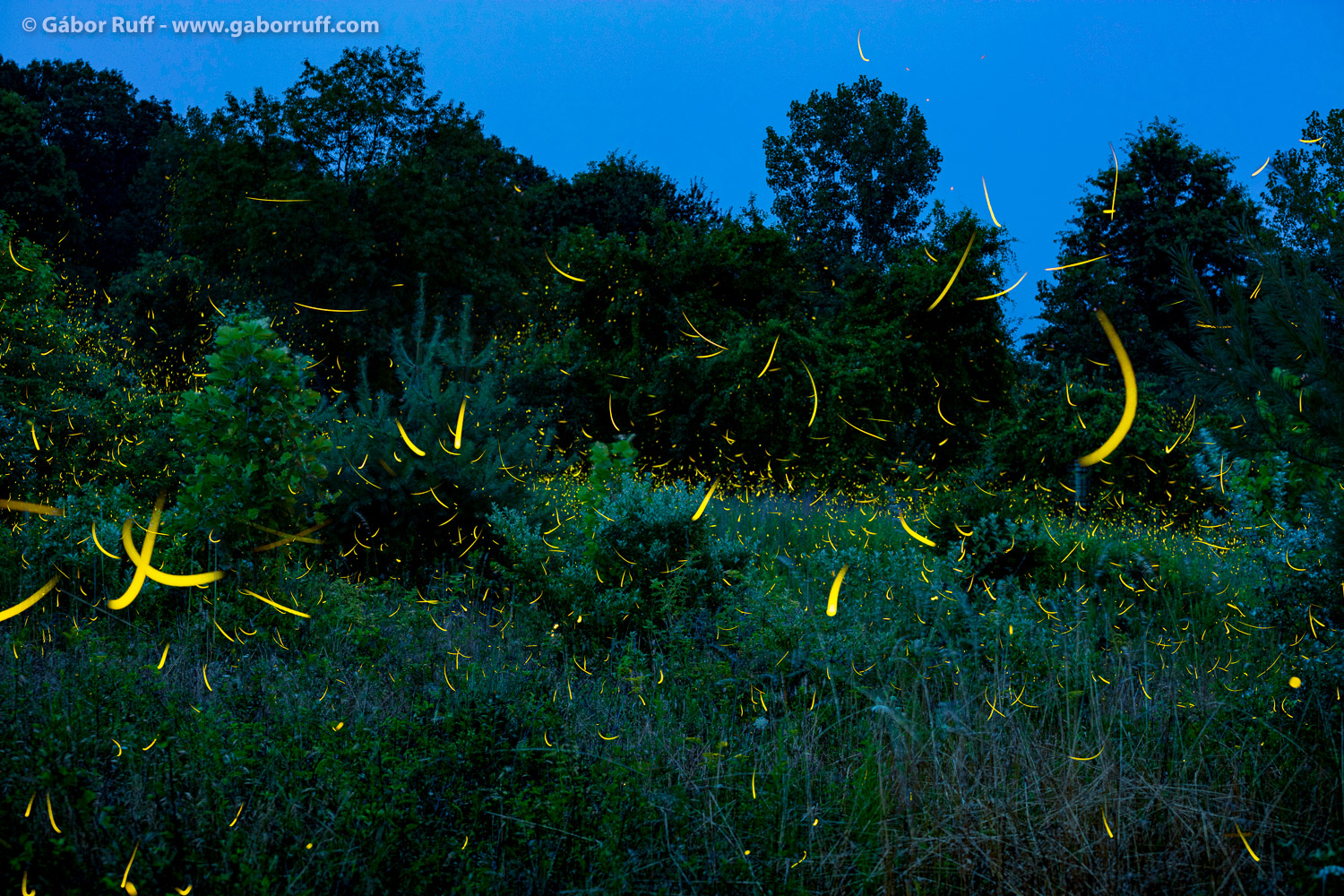The “firefly season” is a few weeks long summer spectacle on the Northeast. I really enjoy spending some time outside at dusk watching and photographing this wonderful phenomenon. This year I didn’t take any close-up images of these lightning bugs, because I’m happy with the ones from last year. The most common species on the Northeast is the big dipper firefly (Photinus pyralis), but I saw a few other species as well. Big dippers are easily identifiable by the males’ swooping J-curve flight and their yellow-colored light. One other species I saw had a greenish-yellow light and its males flew in a straight line while blinking periodically. I believe they were Photinus ignitus fireflies, a relatively common species here. They tend to come out later when it’s darker and they prefer places a little far from people. They probably more sensitive to light pollution than big dipper fireflies. Watching these beetles in nice warm summer nights is really magical, even with the annoying mosquitoes that took a considerable amount of my blood as a toll while I was photographing the fireflies. I guess that’s the price we have to pay for taking photos of this marvelous show.

I took these two images next to our house on a meadow, where there were beautiful wildflowers among the tall grass and also some trees in the background. I composed these photos to show the sky too. Big dippers fly at dusk so I thought a blue hour type image would nicely indicate the time of day they are most active. Both of these images show approximately one-hour-long firefly activity in different parts of the meadow.
Gear: Canon EOS 5Ds, Canon 70-200mm lens, Gitzo tripod, RRS ballhead, Canon EOS 5Ds R, Canon 17-40mm lens, Manfrotto tripod with Manfrotto ballhead.


